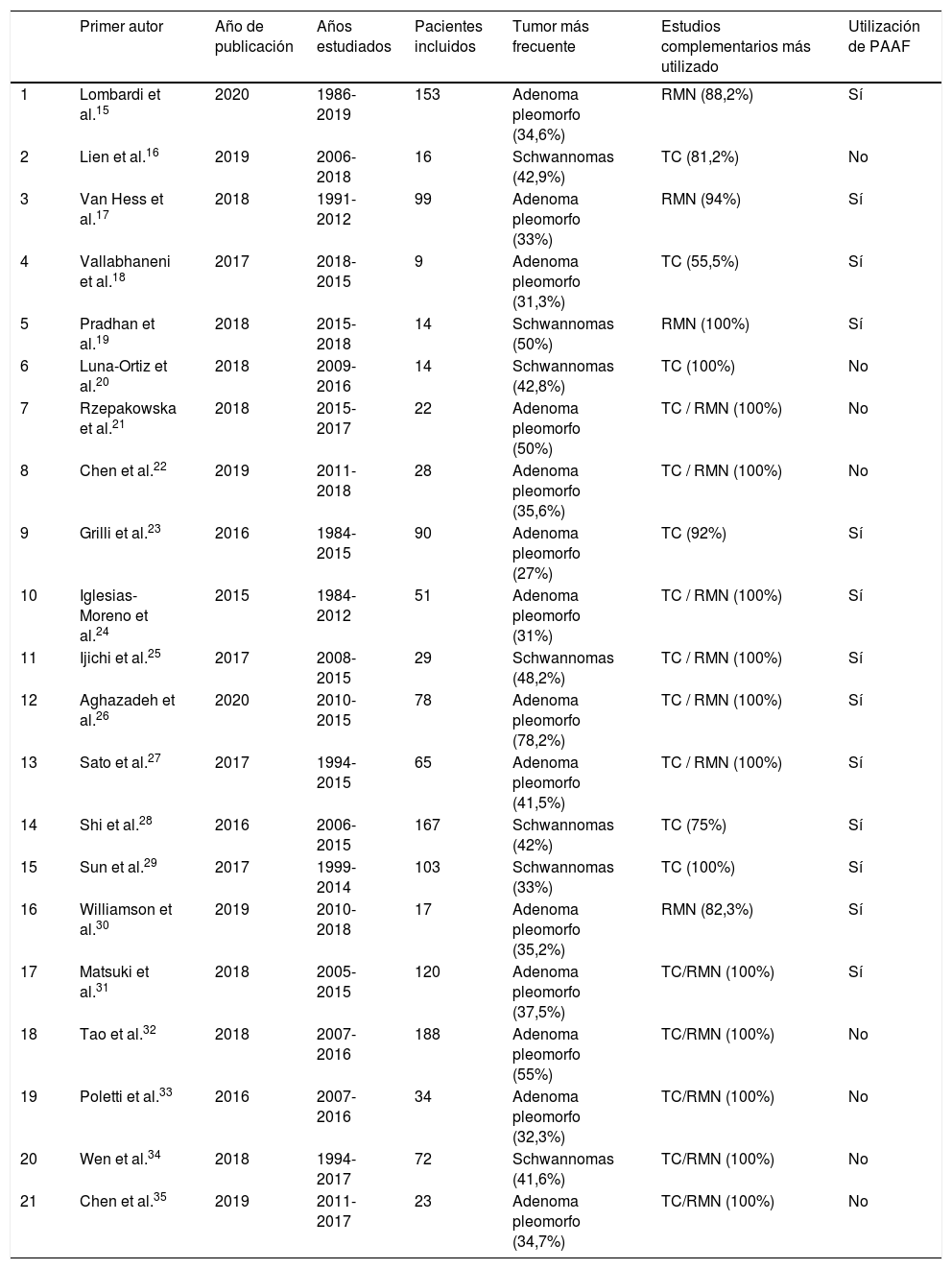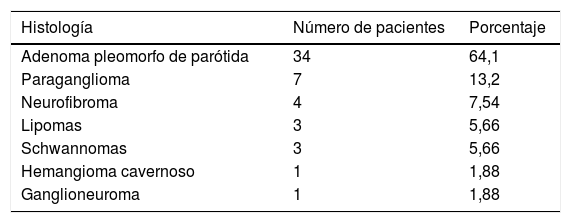El espacio parafaríngeo (EPF) es definido como un espacio profundo, situado alrededor de la faringe superior, con forma de pirámide invertida. Los tumores primarios de esta región son poco frecuentes, representando el 0,5% de las neoplasias de la cabeza y el cuello, y la mayoría son benignos. El objetivo de este trabajo es proponer un nuevo algoritmo de estudio basado en una revisión sistemática y en nuestra experiencia.
Material y métodoSe realizó un trabajo transversal y analítico a través de la revisión de historias clínicas de nuestro hospital. Se incluyeron pacientes con tumores del espacio parafaríngeo operados desde enero de 2010 a diciembre de 2019 con revisión en Pubmed de estudios de los últimos 5años. Tuvimos en cuenta signos clínicos, métodos diagnósticos, diagnóstico presuntivo y hallazgos histopatológicos. El análisis estadístico se realizó con el software STATA v.14.
ResultadosSe incluyeron 53 casos nuestros y 1.392 de la revisión. El algoritmo clínico mostró una sensibilidad del 76,4% y una especificidad del 96,3%, con una AUC de 0,57 para el diagnóstico.
DiscusiónLos exámenes radiológicos complementarios son imprescindibles en el diagnóstico topográfico del tumor. La angio-RNM vincula el tejido de origen de los tumores y aporte la mayor certeza diagnóstica. La PAAF tiene algunas desventajas en EPF, pero es útil en algunos pacientes.
ConclusiónEl algoritmo propuesto contribuye a obtener resultados excelentes en el manejo de estos tumores debido a que resultó ser eficaz en el diagnóstico, y ello permite mejorar la planificación quirúrgica.
Parapharyngeal space (PPS) is defined as a deep space, located around the upper pharynx, in the shape of an inverted pyramid. Primary tumours in this region are rare, accounting for 0.5% of head and neck neoplasms, and most are benign. The objective of this study is to propose a new study algorithm based on a systematic review and our experience.
Materials and methodsA cross-sectional and analytical study was carried out through review of the clinical records of our hospital. Patients with tumours of the parapharyngeal space operated from January 2010 to December 2019 and a systematic review of Pubmed studies from the last 5years were included. We considered clinical signs, diagnostic methods, presumptive diagnosis and histopathological findings. Statistical analysis was performed with STATA v.14 software.
Results53 of our cases and 1392 from the review were included. The clinical algorithm showed a sensitivity of 76.4% and a specificity of 96.3%, with an AUC of 0.57 for diagnosis.
DiscussionComplementary radiological examinations are essential in the topographic diagnosis of the tumour. Angio-MRI links the tissue of origin of the tumours and provides the highest diagnostic certainty. FNA has some disadvantages in PPS, but it is useful in some patients.
ConclusionThe proposed algorithm contributes to obtaining excellent results in the management of these tumours because it turned out to be effective in diagnosis, and this enables improved surgical planning.













